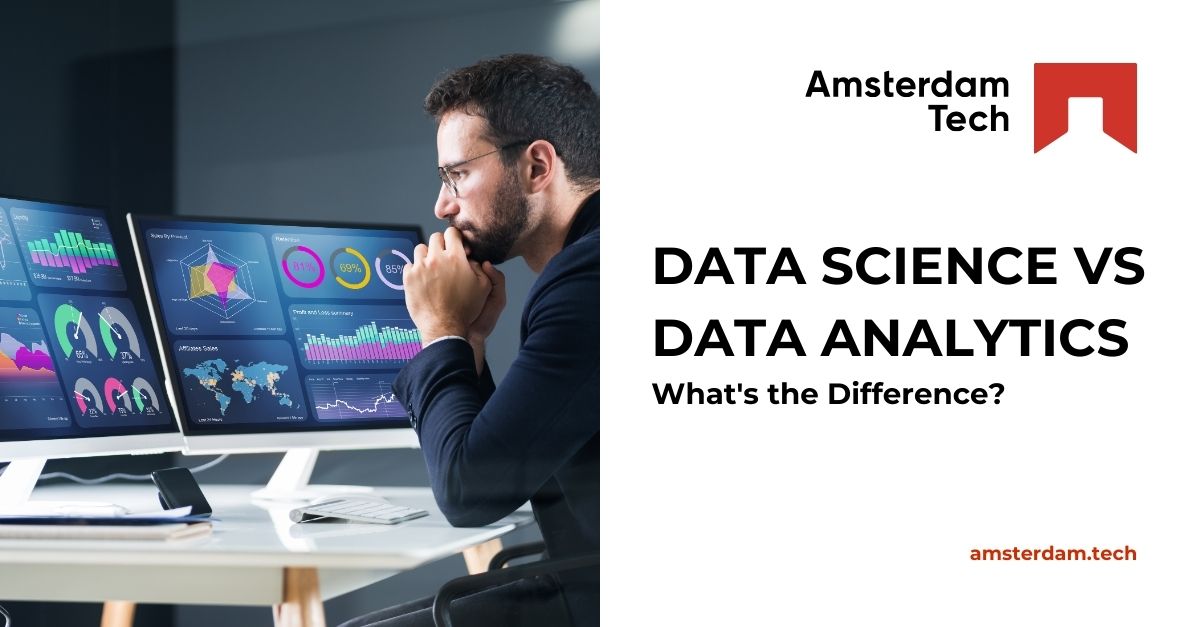
Data Science vs Data Analytics: What’s the Difference?
In today’s data-driven world, terms like “data science” and “data analytics” are often used interchangeably. While both fields deal with data and share some similarities, they are distinct disciplines with unique methodologies, goals, and outcomes. Understanding the differences between data science and data analytics is crucial for anyone looking to enter the field or make informed decisions about their data needs. In this article, we will explore the key distinctions between data science and data analytics, their respective roles, and their applications in various industries.
Defining Data Science and Data Analytics
Data Science
Data science is an interdisciplinary field that combines statistics, computer science, and domain expertise to extract insights and knowledge from structured and unstructured data. Data scientists use a variety of techniques, including machine learning, statistical modeling, and data mining, to uncover patterns, make predictions, and inform decision-making.
Key Components of Data Science:
- Data Collection and Preparation: Gathering data from various sources and cleaning it to ensure accuracy and consistency.
- Exploratory Data Analysis (EDA): Using statistical tools and visualization techniques to explore data and identify trends and patterns.
- Model Building: Developing predictive models using machine learning algorithms and statistical methods.
- Model Evaluation: Assessing the performance of models and refining them to improve accuracy.
- Deployment and Maintenance: Implementing models in production environments and monitoring their performance over time.
Data Analytics
Data analytics is the process of examining raw data to draw conclusions and make informed decisions. It involves the use of statistical techniques, data visualization tools, and business intelligence software to analyze data sets and generate actionable insights. Data analysts focus on answering specific questions and providing data-driven recommendations.
Key Components of Data Analytics:
- Data Collection: Acquiring relevant data from various sources.
- Data Cleaning: Ensuring data quality by removing errors and inconsistencies.
- Descriptive Analytics: Summarizing historical data to understand what has happened.
- Diagnostic Analytics: Analyzing data to determine the causes of past events.
- Predictive Analytics: Using historical data to make forecasts about future events.
- Prescriptive Analytics: Providing recommendations for actions based on data analysis.
Key Differences Between Data Science and Data Analytics
1. Scope and Focus
- Data Science: The scope of data science is broad, encompassing the entire data lifecycle, from data collection and preparation to model building and deployment. Data scientists aim to uncover hidden patterns and build predictive models that can be used to solve complex problems and drive strategic decision-making.
- Data Analytics: Data analytics has a narrower focus, primarily concerned with analyzing historical data to answer specific business questions. Data analysts provide insights and recommendations based on existing data, often using descriptive and diagnostic techniques.
2. Methods and Tools
- Data Science: Data scientists use advanced techniques such as machine learning, artificial intelligence, and statistical modeling. They work with programming languages like Python and R, as well as tools like TensorFlow, PyTorch, and Hadoop.
- Data Analytics: Data analysts rely on statistical analysis, data visualization, and business intelligence tools. Common tools and languages include SQL, Excel, Tableau, Power BI, and SAS.
3. Outcomes
- Data Science: The outcome of data science is often a predictive model or algorithm that can be used to automate decision-making and generate new insights. Data science projects tend to be more exploratory and innovative.
- Data Analytics: The outcome of data analytics is typically a report, dashboard, or set of recommendations based on the analysis of historical data. Data analytics projects are more focused on answering specific questions and providing actionable insights.
4. Skill Sets
- Data Scientists: Data scientists need a strong foundation in mathematics, statistics, and computer science. They should be proficient in programming, machine learning, and data manipulation. Critical thinking and problem-solving skills are also essential.
- Data Analysts: Data analysts should have strong analytical skills and be proficient in statistical analysis and data visualization. Familiarity with business intelligence tools and the ability to communicate findings effectively are crucial.
Applications in Industry
Both data science and data analytics are essential in various industries, including:
- Healthcare: Data scientists develop predictive models for disease diagnosis and treatment, while data analysts analyze patient data to improve healthcare services.
- Finance: Data scientists create algorithms for fraud detection and risk assessment, while data analysts examine financial data to guide investment decisions.
- Retail: Data scientists build recommendation engines and optimize supply chains, while data analysts analyze sales data to enhance marketing strategies.
- Manufacturing: Data scientists use predictive maintenance models to reduce downtime, while data analysts analyze production data to improve efficiency.
Conclusion
While data science and data analytics are related fields, they serve different purposes and require distinct skill sets. Data science focuses on creating predictive models and uncovering new insights, while data analytics centers on analyzing historical data to inform decision-making. Understanding the differences between these disciplines is essential for leveraging their respective strengths and maximizing the value of data in any organization. Whether you’re looking to build advanced machine learning models or analyze business trends, both data science and data analytics offer valuable tools and methodologies to help you achieve your goals.
